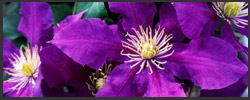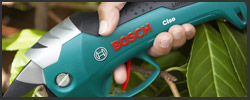YOU ARE HERE Garden answers > Fruit & fruit growing
Fruit & fruit growing
Help solve your gardening problem. Here are the answers to some commonly asked gardening questions about growing your own fruit with hints, tips and advice.
If you are unable to find the answer here, then send me an e-mail
Our boysenberry fruit contains lots of tiny maggots. What shall we do?
Well, first, I wouldn't eat it!
This sounds like raspberry beetle grubs. Obviously, there is nothing you can do now, but you should remove and destroy all the fruit to kill the grubs before they can turn into adults, which will attack the fruit again next year.
You can also take measures next year to prevent it happening again. Pyrethrum (Py Spray Garden Insect Killer, Bug Clear Gun for Fruit & Veg, Doff All in One Bug Spray) can be used to control raspberry beetle. Spray at 75-80% petal fall in the evening when bees are not active on the flowers.
You can also buy a raspberry beetle pheromone trap, which doesn't use chemicals. It is available from Harrod Horticultural - one of my affiliate companies.
I am growing a dwarf pear tree in a container; I planted it this spring. It seems to be growing well. Could you please tell me when it will produce fruit and also how do I take care of it through the winter months?
You should get some fruit on it next year, but I would certainly thin this out so that no more than five to six fruit actually make it to fruition. If it crops too heavily early on it can reduce fruiting in subsequent years.
It should be fine to leave the tree outdoors all winter; although in a very severe winter you may want to protect the roots from freezing solid. The top growth will be fine. Just give the compost enough water to prevent it from drying out.
We have a new plum tree. This year it was full of fruit but, just when the fruit was nearing picking time, they shrivelled and withered. They are still clinging to the tree.
This sounds like brown rot disease, which has been very bad this year due to the cool, wet summer weather. The disease enters fruit - mainly, but not always, through wounds. Insect damage and damage from apple scab are all responsible for allowing entry.
There are no chemical controls available, but all affected fruit must be removed and disposed of. If you leave any behind on the tree over winter they will re-infect the fruit next year. In spring (late April/May) prune out and dispose of any dead shoots.
It’s also a good idea to rake up and dispose of all the fallen leaves.
When is the best time for pruning fruit trees; I have a pear, plum, cherries and apple, and they are very old and in very rough shape.
Plums, cherries and other stone fruit don't really like a lot of pruning - otherwise they become shy at fruiting and it can take a few years for them to get back into fruiting mode. I would try and limit yourself to removing dead, dying, diseased or damaged wood, branches that are too low or spread too far, those which cross from one side of the tree to the other and those that are touching or rubbing. Pruning of all stone fruit must be carried out any time from May to August.
Apples and pears can either be pruned in winter or in summer. Winter pruning encourages growth and summer pruning encourages flowers and fruit. But again try and limit how much you do - or do it over two or three years. I would start by removing the same sort of growth as outlined above and then leave it for a year and see what happens.
After pruning, give a feed with a balanced granular fertiliser.
Further details are available in my pruning book
I have a good crop of apples, but many have developed a brown mark on the top. What is it and is it dangerous to eat the fruit?
The brown marks on your apples have been caused by a late spring frost damaging the developing fruits.
There is nothing you can do now, but don't worry the fruit is perfectly safe to eat.
What are the red growth on the foliage of my peach tree?
This is the disease peach leaf curl which is a very problematic disease. A plant that you know is susceptible should be sprayed in February with Bayer Garden Fruit & Veg Disease Control and again twice more at two week intervals.
Affected leaves should be removed and burnt. In the autumn gather up and destroy all the leaves and spray with Fruit & Veg Disease Control; spray the ground below the tree, too to kill spores there.
Protecting the tree from rain in spring will help prevent the disease as it stops the spores splashing back onto the leaves. If it is wall trained it is easy to make a tent over the plant using plastic sheeting right down to the ground. Obviously, if it is free standing this makes it more of a problem.
My boysenberry is thriving producing plenty of new growth, but why doesn't it set any fruit even though it has masses of blossom?
Most boysenberry problems revolve around the fact that growers don't get any flowers - so at least you're more than half way to a good crop!
The boysenberry is an American hybrid and not so well suited to the British climate as, say, the loganberry.
If your plant flowers but doesn't set fruit then there are two possible causes. First, the flowers are being frosted or damaged by cold winds at or just after flowering or the flowers are not being pollinated by insects.
If the first is the cause, then a layer of horticultural fleece laid over the plant will keep off a few degrees of frost/cold wind. But this must be removed in the day to allow pollinating insects at the flowers.
I need help with pruning a 100 year-old-vine, growing under glass. It fruits extremely well. Can you recommend a website, or book?
Grape pruning can be complicated and not easy to explain over the internet.
There is a good book published by the RHS called The Fruit Garden
Displayed, which has a good section. Similarly the RHS Encyclopaedia
of Practical Gardening - Fruit is good.
As is my own book on pruning!
I planted up a strawberry planter with two different varieties. This year, the plants produced lots of foliage but virtually no fruit. Can you advise me the best way to get them to fruit next year?
Strawberry plants - if grown well - usually come with the promise of flowers in their first year, the buds are often already formed, which is why yours had plenty in the first year. Encouraging flowers in the second year is often the tricky part.
If you get lots of foliage and little fruit it usually means that:
* The plants are still getting established and should fruit the following year.
* Or they are being fed with two much nitrogen and not enough potash. Feed once a week in the growing season (March-September) with a high potash liquid fertiliser, such as a tomato food.
Should I remove this year's leaves from my strawberries?
I wouldn't remove the foliage now - it's a job that needs to be done immediately after fruiting. But I would tidy up the plants - removing dead, dying or diseased growth.
Where should I keep my strawberry planter over the winter - is it OK to keep it outdoors in a sheltered spot with a clear plastic bag over the top to protect against frost or should it go into a shed?
It's OK to leave the planter out all winter - just put it somewhere sheltered, close to a south-facing wall. But if you want to try and force an early crop you will need to keep the planter frost free.
I certainly would not cover it (or any other plants) with a plastic bag - this will give no protection and the sweaty conditions it creates will lead to all sorts of disease problems.
I planted some autumn raspberries last year and cut them down hard in the spring. This year I've planted some more. They said they were ready to fruit and are about 45cm (18in) high so do I prune them in February like last year or not. Also do I prune the canes I put in first of all and if so when? I know I have to mulch them with muck - how about using mushroom compost?
With regards to the new canes - try half and half. It's possible that some of the 45cm (18in) high growth may produce a slightly earlier crop of raspberries.
Yes, you need to prune the current year's canes every February.
No, don't use mushroom compost. It contains 6% lime and raspberries prefer an acid soil - good old muck is much better.
If you want to know more, or if there's a gardening topic you're having a problem with and want help and advice, then send an e-mail to: info@gardenforumhorticulture.co.uk


